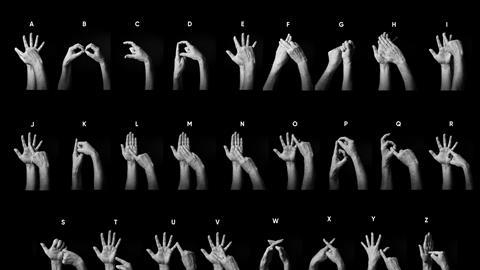BSL can help students learn vocabulary and concepts as well as retrieve existing knowledge
When I started learning British Sign Language (BSL) a few years ago with the intention of communicating better with colleagues who sign, I had no idea that I’d soon be reaping the benefits in the classroom. Thanks to BSL’s descriptive and functional nature, I’ve found it really useful in my teaching.
It’s only relatively recently that BSL has been legally recognised as a language (2015 in Scotland and 2022 for the rest of the UK), but there are gaps in the language, for example in the field of STEM education. Thankfully the University of Edinburgh is helping to change that, as my colleague Audrey Cameron explains: ‘The BSL Glossary Project at the University of Edinburgh’s Scottish Sensory Centre (SSC) has been working with a team of 36 deaf scientists and sign linguists to collate and create nearly 4000 specialist signs for STEM concepts.’ And they’re all in the online glossary of videos of BSL signs, definitions and demonstrations with English text – ready for use in your science classroom.
Incorporating BSL into my classroom practice has been a hugely positive experience for both me and my learners. With classrooms increasingly incorporating different educational needs, sign language has the potential to remove barriers and aid inclusion, ultimately improving learning outcomes for all.
Here are a few of the ways I’m using signs in my science classroom.
1. Reinforce vocabulary and concepts
BSL is very descriptive, and the signs often visually describe the concepts your students are learning. For example, the sign for noble gas includes the sign for gas and reinforces that noble gases will not react when they collide. This helps when teaching complex concepts to younger learners, as the sign clearly shows the concept.
2. Answer multiple choice answers
I often use fingerspelling – the BSL alphabet – as an alternative to mini whiteboards when using multiple choice questions as part of formative assessment. I show pupils the fingerspelling for A, B, C and D, then I ask them to sign the letter of the correct answer. It’s much quicker than getting out the mini whiteboards and avoids disrupting the lesson flow. Don’t just stick to A, B, C and D, use other letters too so your students can learn the alphabet – a useful skill for communication in future.
3. Ask what a sign means
Because the signs are so visually descriptive and demonstrate meaning, they are useful for introducing a topic. I make a sign without telling the students what it means and ask them to suggest its meaning. For example, the signs for acid pH, alkali pH and neutral show below a midpoint (7), above this point and at this point, respectively.
4. Ask what sign would you use for
Ask students to come up with signs they would use for different concepts. This way they demonstrate their knowledge of the word/concept. You can expand this into a revision activity at the end of a topic. Give different groups different parts of the topic to sign and ask the others to guess the term. Then the signing groups explain their thinking.
5. Refresh knowledge
You can use the SSC’s videos to refresh students’ understanding of experiments and of what processes are happening. For example, show this video of distillation, then ask your learners what each part of the sign represents in the process. About one minute into the video shows the solution turning into vapour, then condensing back into a liquid with a corresponding reduction in volume. Have your students recognised this? And if not, ask them if they can suggest an alternative sign to clarify the process.















1 Reader's comment